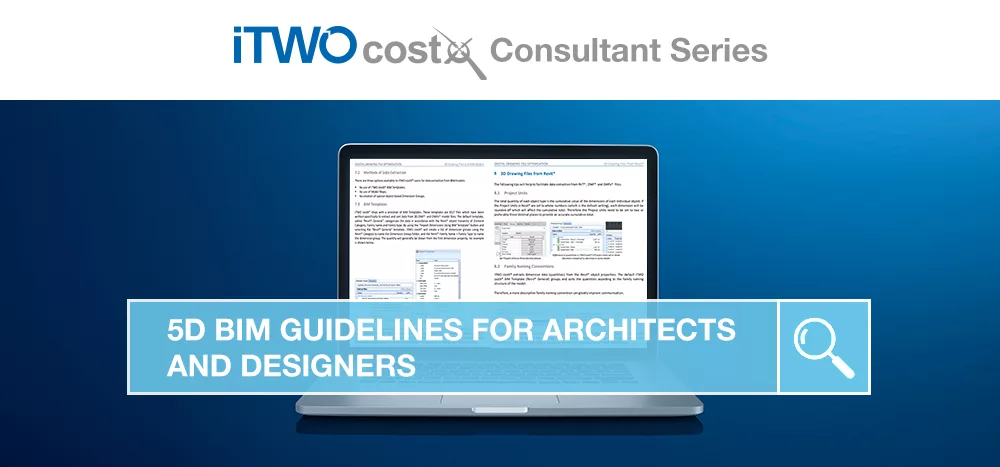15 mins read
A Complete Guide To Construction Reporting

If the world was a sports car, data would be in the driving seat, wouldn’t it? Today, decision-makers worldwide have traded intuitive decision-making for decisions based solely on accurate insights. And this has proved to be a big step towards more efficient, effective and collaborative work. With modern reports, companies can visualize their data and keep up with changes as soon as they occur, making professional reporting a substantial competitive advantage.
The AEC industry has already ventured into the analytical landscape. Construction reporting has become vital to keeping projects on track and budget. Reports provide a reference point for stakeholders and ensure that all project information is up-to-date and accurate.
Construction projects can be complex, involving many different trades, disciplines, and processes. Professional reporting is vital to keeping everything together, resulting in a boost in construction productivity.
Follow this complete guide by RIB to learn everything about construction reporting and its importance.
What Is Construction Reporting?
Construction reporting is the process of documenting project data in an interactive format to support decision-making. It boosts collaboration and informs all stakeholders about important events and processes for enhanced efficiency and transparency.
To ensure smooth operation during a construction project, you must monitor every stage and process to the finest detail. This includes keeping accurate records of who did what, when they did it, and how much it cost. You also need to document any approved changes made to plans and specifications to ensure everyone knows exactly what was agreed upon before starting work.
Having such an overview is invaluable to a project’s success. From preconstruction planning to handover, modern construction reporting software, such as RIB CanBuild, provides a unified environment to keep all stakeholders connected and working towards a common goal. This significantly reduces the risk of issues and makes the project more efficient regarding costs and resources.
Traditionally, reports are produced in an extended written format. Luckily, as more industries discover the power of digitalization, the reporting process has mutated into a more summarized, visually appealing digital format. Modern construction reports are now generated as interactive dashboards composed of insightful graphs and charts that tell a complete data story to inform strategic project decisions.
The Role Of Reporting For Different Project Stakeholders
The key to a successful construction reporting system is collaboration. Each project stakeholder plays an essential role in the process and will find different values in the reports. We will discuss the different types of reports later in the post. Now, let’s talk a little about each stakeholder’s role.
Project owner: Owners have the greatest vested interest in construction reports. They outline the requirements and offer continuous suggestions to improve the workflow. Reporting is not a one-and-done process; it requires constant rethinking and adaptation to ensure it provides the highest value to the project.
Onsite stakeholders: All onsite stakeholders are responsible for ensuring that everything happening in the field is tracked, observed, and reported. These include site supervisors, project managers, executives, and others.
Contractors: From an operational perspective, contractors are responsible for aggregating all the data from the different subcontractors and providing valuable reports about material usage, labor, and progress.
Consultants: Conversely, consultants, such as quantity surveyors or estimators, are responsible for generating specialized reports about their expertise, including cost analysis and compliance checks.
Why Is Construction Reporting Important?
Understanding what’s going on with your project from beginning to end is always important. If you don’t have an up-to-date record of all the events that occurred during the construction phase, you won’t be able to substantiate why and how things deviated from the original plan.
Construction reports form a key reference point for understanding projects, detecting trends, staying ahead of unexpected delays, and monitoring the ongoing developments within a project. In essence, your construction report gives you a clear picture of progress and its alignment with your goals.
But that is not all; the process offers an extensive list of benefits, discussed below.
- Enhanced transparency: The 360-degree view provided by modern reports significantly enhances transparency between all stakeholders. With access to budgets, schedules, progress, and much more, all parties better understand how much goes into a construction project. It helps build trust, provides complete transparency, and develops more realistic expectations.
- Better strategic and operational decisions: Construction reports aren’t only used to represent progress on a job site. They are also key documents to improve the decision-making process. Project managers need to make many important decisions each day. These decisions greatly impact on the project, so they must be backed by relevant information. Having access to detailed reports gives PMs more precise insights from which to draw information. As a result, they can make better, more efficient data-driven decisions.
- Boosts project quality and accountability: Reporting ensures that workers know every job that needs to be done and its status. Without it, contractors risk running the project over schedule or over budget. Reports also ensure that no questions are left unanswered. They prove that each task was done, when, and by whom, and leave a clear trail of what happened during a project. All of these not only help boost overall quality but also allow for a high degree of accountability. If an error occurs, you’ll have clear records of when it happened and who was involved.
- Accurate planning: A professional construction report is valuable not only during project completion but also proves helpful for accurate planning. For example, by analyzing historical data, you can’t accurately predict future cost implications or determine whether you require budget adjustments. You can also get an idea of how long it will take to complete each stage and compare it with the actual times to draw conclusions.
- Enhanced collaboration: As mentioned before, construction communication and collaboration is key to a project’s success. Digital construction reports provide the perfect environment to keep every stakeholder connected and working based on the same data. In the past, the reporting process was fragmented, leaving much room for error, as parties were not working from the same updated information. Modern construction reporting solutions offer real-time, centralized report access to boost collaboration.
Types Of Construction Reports
When we consider the term “construction report,” it is likely to encompass many different things to different people depending on what they are accustomed to compiling or receiving. Various types of reports exist to cover the different activities and processes involved in each project.
Here are the main types divided by area and reporting schedule!

By Project Area:
1. Construction Progress Reports
A progress report in construction summarizes a project’s development and status, including completion percentage, remaining profit, costs incurrent, and paid revenue, etc. It is often regularly compiled to help contractors understand precisely where they are according to the schedule. It also helps the different stakeholders stay informed about what others are doing to prevent getting ahead before something else is done.
State-of-the-art construction ERP systems are constantly updated with every action, transaction, and development within the project. This is possible due to the seamless linking of all elements from end to end. These elements speak the same language and cross-reference each other. For that reason, the actual progress of every aspect is always updated and available to be shared. Gone are the days of ‘best guessing’ and hoping for the best. Progress reports are now available at the tip of your fingers whenever you want or need them.
2. Construction Cost Reporting
A cost report provides detailed financial data about a project. It includes information about the materials used, labor hours, and other expenses. Cost reports are important in comparing allowable budgets with actual expenditures. It is essential to carefully monitor and compare construction cost estimation and budget to ensure the project stays on track.
3. Construction Materials Reports
A materials report summarizes the quantity and quality of materials used during a project. This may include information about the types of materials used, their prices, and their sources. They help keep track of the actual materials used compared to the take-off and estimation. They aim at minimizing waste and overspending. They also ensure that projects do not incur a situation where there is a lack of materials, which would cause delays.
4. Construction Project Management Report
A construction management report is a concise synopsis of a project’s present situation for the project manager. Though the exact details may vary according to company guidelines and project requirements, this report provides a formal record of conditions as they occur. The report may be delivered weekly, bi-weekly, or monthly, but one of the primary objectives is to maintain, and document, a project’s status and the communications between stakeholders. Though most project management reports are only a few pages long, some projects require more in-depth analysis.
Some critical data included in these reports is:
- The name of the project, the manager, and the client
- The start and expected end dates
- Contact information for key stakeholders
- The current schedule progress as measured against the project’s construction plan
- A current cost vs budget comparison
- The current scope compared to the plan’s scope
- An updated risk overview
- Updates on any pending or approved change requests (Variation Orders)
- A summary of key high-level decisions and actions implemented since the release of the previous report
- Upcoming project milestones
5. Market Trend Reports
A trend report summarizes recent trends in the industry. For example, it might show which materials are most popular among contractors today. They are instrumental because they help you identify new products and technologies that could benefit your projects.
As its name suggests, this report tracks everything related to site safety. It includes data about safety equipment usage, adherence to safety protocols, and potential hazards. Contractors use them during site inspections to identify non-compliance with safety protocols and prevent future incidents. Safety reports in construction need to be constantly updated and revisited daily, weekly, or monthly, depending on the size of the project, as new hazards can come up constantly during the building process.
7. Construction Incident Report
As you learned in the previous point, tracking safety in a construction site can significantly mitigate the risk of incidents. Regardless of how careful you are, incidents can still occur. If so, the project manager must generate construction accident reports to identify the causes and quickly address them to prevent any other incidents. No matter how big or small the incident is, this kind of overview needs to be generated for mitigation and legal purposes.
Field reports are more specialized than other types of construction reports mentioned in this list. They are often generated to document a specific occurrence or milestone, including material deliveries, inspections, project phase completion, equipment testing, etc. Since they are more specialized, they require the involvement of various stakeholders to be generated. These documents help ensure successful project management, risk mitigation, and quality control.
9. Construction Handover Reports
These reports document the handover stage of a project. They compile all relevant data, including final inspections by trade or project stage, the operation and maintenance manual, test & commissioning reports for each equipment installed, and certificates of compliance, among many other things.
10. Construction Risk Management Reports
At the commencement of a project, potential risk factors will be considered and then revisited throughout its lifecycle with a risk management report. These may have a periodic schedule or be compiled following a risk review meeting. It is important to note that, even with this amount of forward planning, dealing with risks will likely result in retrospective action or repairs being required after discovering that damage has already begun.
11. Construction Resource Management Report
Having this information allows resource planning to be fine-tuned to maximize efficiency. You can genuinely get the maximum usage from your equipment and tools and achieve the most effective deployment of your human resources and materials across multiple projects.
By Reporting Schedule:
12. Construction Daily Reports
Detailed construction daily reports provide a clear narrative of what happens during a project, how it is shaping up, and what challenges may arise daily, including weather conditions, workforce attendance, etc. These forms are essential documentation for managing the project effectively. Nobody plans for delays and issues, but unfortunately, we can’t always prevent the unexpected. A detailed daily report can help you better grasp these events and make progress planning more efficiently.
13. Construction Weekly & Monthly Reports
As its name suggests, these types of reports track relevant data gathered every week or month. Sometimes, some processes or tasks need to be tracked for a longer period, as more data needs to be collected to extract meaningful conclusions. Often, weekly construction reports complement daily ones to get a holistic view of project progress.
Regardless of the type of report, project managers should ensure enough details and additional documents to supplement their report documentation. This could include additions like photos of the site, videos of a site walkthrough, and other visual details that provide more context and information.
Best Practices To Generate A Modern Construction Report
As you’ve learned by now, construction reports are among the most important forms of documentation for any project. However, many professionals don’t fully use them to empower the ongoing project.
This is because traditional reports are limited by the number of in-line items you can include. If you rely on a simple checklist template, you won’t be able to add much-written detail. This can limit the amount of important information your report includes.
To succeed in the process, you must follow some key best practices and support yourself with the right tools. Let’s explore some critical tips for generating a successful construction report.

- Set clear goals and objectives
Although it might seem like an obvious point, many construction businesses fail in their reporting efforts because they lack clarity on the desired outcomes. Therefore, before doing anything, you should meet with relevant project stakeholders and define your reporting requirements and objectives. Doing so will help you better understand the value of your reports and collect the correct data.
While tracking every piece of data generated in the project might sound tempting, it can make the analysis process a lot more complex than necessary, as some data might confuse your analysis. Therefore, think carefully about the internal and external data sources you want to collect based on the expected outcomes and objectives. In this way, every stakeholder will have access to the relevant information and know how it should be used.
- Invest in the proper construction reporting software
The best way to ensure you’re getting the most from your construction data reports is to digitize them. Digitalization breaks the silos that exist in traditional reporting, opening doors to a more collaborative and accessible process.
The right construction software solutions will help you store all the daily project details in real-time and in one place that can be easily accessed online through various devices, giving managers easy access to the project details while on-site.
Digital tools also provide more customization options, allowing you to deliver reports that reflect your specific project better.
- Use real-time data and templates
As you know, construction projects are nonstop. New processes and tasks are implemented daily, machines are used, and materials are received. Naturally, this can be subject to error or unexpected situations. Thanks to the power of real-time reporting, stakeholders can stay informed and ready to act on any new developments, another great benefit of digital construction.
Real-time construction daily reports can easily be generated using premade templates covering all the areas we discussed earlier in the post. Templates make the reporting process more time-efficient, leaving enough time to focus on the analysis.
- Foster communication and collaboration
No matter what tools or data you use, if your reporting process does not have collaboration at the center, it simply will not work. This is especially true in construction, where multiple people must work together to complete a project. Boosting construction project collaboration will make the reporting process more efficient and accurate while boosting transparency and productivity. Modern construction software offers a range of functionalities to keep every project member connected. That said, you should be aware that some people might not be technologically driven and could need help with the process.
- Ensure data quality & privacy
This is one of the most essential practices you should follow when using data. We are talking about ensuring quality and privacy.
Poor data quality can do a lot of damage to a project. Decisions can be based on inaccurate information, leading to incidents and a building that might have safety issues. In fact, a recent survey showed that companies believe 31% of their revenue is impacted by poor data quality, making this a huge priority.
On the other hand, with the rise of cyberattacks and data breaches, investing in proper report protection is of utmost importance. Some construction reporting solutions might offer role management access and encryption to keep data private and secure.
Construction Report Examples & Templates
Construction reports provide a straightforward story and reference point for your project’s ongoing status. So much occurs on a construction site daily, and these reports must accurately reflect that. So, are your construction reports empowering you to make good decisions?
These days, using a simple checklist template just isn’t enough for accurate reporting. It doesn’t provide enough context or details about each day’s accomplishments.
In fact, these reports are so much more than just a summary of daily accomplishments. They form a critical reference point for every development, setback, and advancement that occurs on the construction site.
We’ve already given you some tips on achieving a successful reporting strategy. Now, let’s look at what modern reports look like with some examples generated with RIB BI+.
1. Construction Project Report

The construction project progress report below offers a visually appealing overview of the project’s performance during an observed period. It starts with a chart displaying relevant totals for the project, including budget, margin, revenue, and costs. It also offers a completion percentage in an engaging format, allowing the user to see the project stage and study the data accordingly. The observed period can easily change using the filters at the top of the report.
The right portion of the dashboard offers a performance breakdown based on the work schedule, work performed, and total actual costs from where you can extract multiple conclusions. For example, the cost performance index (CPI), which tells you how much you earn for every dollar you spend, shows a score of 0,97, meaning the project is over budget. While the variance might not seem critical, it can grow if something is not done about it. A minimum CPI of 1 should be the goal to keep the project on budget.
2. Bid Management Report

The following construction report template offers an overview of bid management. Like the previous example, the report includes filters at the top in case the user wants to visualize a specific category, project, or bid status. This is a great benefit of dashboard reporting, as it allows users to explore various levels of data in a single location, making it easier to answer any questions that may arise during the analysis process.
The template reflects that the net bid value is this report’s main KPI, which shows the value of all submitted bids, including canceled ones. This allows the decision-maker to understand the acceptance rate of all bids, how many bids each employee accomplished, and in which periods of the year the highest bids were submitted to extract deeper conclusions. This overview helps optimize the entire bidding process to ensure the highest return on investment.
3. Cashflow Analysis Report

Lastly, we have the cash flow analysis report. The different colors in the report help the user understand the positive and negative data, making the analysis process much more intuitive and efficient. Let’s explore it in more detail below.
As per the image above, the net cash flow for the observed period is positive, as more cash is received than paid out. The cash balance & net chart flow breakdown chart provides more detailed insights into each month’s cash flow. Here, project managers can monitor the actual cash balance to ensure it does not exceed the planned one. If this is the case, a deep dive into the specific month can provide further conclusions.
Conclusion
Construction industry reporting is essential for overcoming and avoiding challenges on-site. It’s one of the most important duties on a project, so it’s important to optimize this process as much as possible for complete accuracy.
Using the right construction business intelligence tools and including the necessary details in your reports can make an enormous difference to any project’s overall efficiency, productivity, and clarity. Book a demo of RIB CanBuild or RIB BI+ to set your construction project up for success. It has everything you need to ensure your reports empower your decision-making!
Most Recent
15 mins read
49 mins read
14 mins read
15 mins read

E-BOOK











